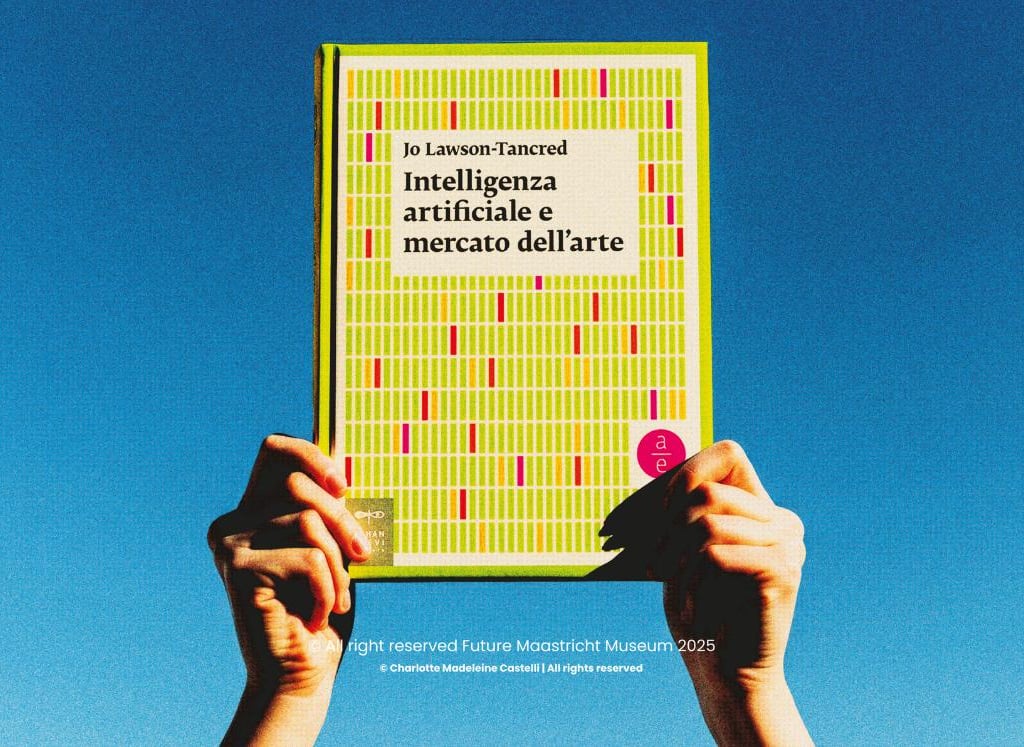Redefining creation, collection, and value.
Discover how AI is reshaping the art world—redefining creation, collection, and value. From generative aesthetics to new collector paradigms, Artificial Intelligence and the Art Market offers a timely, thought-provoking lens on the future of culture, as explored by Future Maastricht within The Heritage project.
BOOK ON MY TABLE
Charlotte Madeleine CASTELLI
7/18/20253 min read


Collecting the Future: Generative Art, Artificial Intelligence, and a New Paradigm of Value
On my table today lies a deceptively slender volume: Artificial Intelligence and the Art Market by Jo Lawson-Tancred, published by Johan & Levi. More than a book, it is a critical tool for interpreting the evolving intersection between technology and contemporary art. With a methodical yet visionary approach, Lawson-Tancred charts a lucid path through this convergence, avoiding both naive enthusiasm and dystopian fear. What emerges is a dense, multi-layered inquiry—part theoretical, part practical—illuminating how artificial intelligence is already reshaping the systems of creation, curation, and cultural value.
The author draws from a wide array of interviews with gallerists, artists, collectors, and AI developers, mapping a genealogy that stretches from early computational art of the 1960s to today’s generative aesthetics, tracing its journey through post-conceptual practices and the dematerialization of the art object. At the heart of the book lies a central question—one we at Future Maastricht also recognize as vital: Can AI help the art world meaningfully engage the next generation of artists, patrons, and collectors?
Lawson-Tancred explores this not as a speculative vision, but as a condition already unfolding. Through emblematic case studies—artist collaborations with generative models, curatorial platforms built on data-driven architectures—the book demonstrates how AI is transforming the production, mediation, and perception of art. One particularly striking metaphor she employs is that of the AI as a “co-pilot”: not a replacement for the artist, but a creative counterpart that amplifies human imagination and augments the cognitive processes of art-making.
This hybrid role of AI expands beyond creation to impact how works are archived, categorized, and assessed. It is in this fluid space—between automation and aesthetics—that a new generative tension arises, one that is already attracting a new wave of collectors. These individuals are less interested in static objects and more attuned to the processual, encoded, and conceptually charged nature of digital artworks.
Lawson-Tancred identifies a clear shift in collecting: from object to system, from physical authenticity to blockchain traceability, from scarcity to semantic density. The collector of the 21st century emerges as a sense-maker—someone who engages with networks of meaning, who collects not only the artwork but its algorithm, its metadata, its relational ecosystem. Often from tech or interdisciplinary backgrounds, these collectors resonate with AI-driven and generative practices as expressions of contemporary cultural language.
This evolving landscape is precisely the ground Future Maastricht is cultivating through The Heritage, a living archive and curatorial platform designed to support cultural computation. The Heritage is not a collection in the traditional sense but a dynamic ecosystem, where artworks, metadata, biographies, critical texts, and symbolic metrics interact in real time. Here, evaluation goes beyond market appraisal—integrating predictive tools and neural models to assess the discursive weight and symbolic resonance of an artistic node.
Value, in this paradigm, becomes a function of distributed intelligence: a work is significant not simply for its material form, but for its capacity to activate discourse, generate connections, and propagate cultural insight. We are building a new kind of index—responsive, fluid, epistemic—where the act of collecting becomes a cognitive gesture, and art is measured by its power to reveal and to move through time and space.
Crucially, Lawson-Tancred does not shy away from the ethical implications. She addresses the complexities of intellectual property, the opacity of datasets, the ecological costs of neural networks, and the challenges of reproducibility. What makes this book indispensable is its refusal to fetishize or demonize AI. Instead, it treats it as a critical material—a cultural substance that demands collective responsibility, ethical foresight, and a radical rethinking of the human-machine relationship.
In the end, Artificial Intelligence and the Art Market is more than a timely map of change. It is a foundational lens through which projects like The Heritage can locate their mission and method. It challenges us to not only interpret the shifts we’re living through but to shape them—with vision, with care, and with an expanded notion of what it means to collect.
Because the future of collecting—and of culture at large—will not be dictated by technology alone, but by how we embed it within meaningful frameworks of imagination, responsibility, and shared narrative.
© Charlotte Madeleine Castelli | All rights reserved
